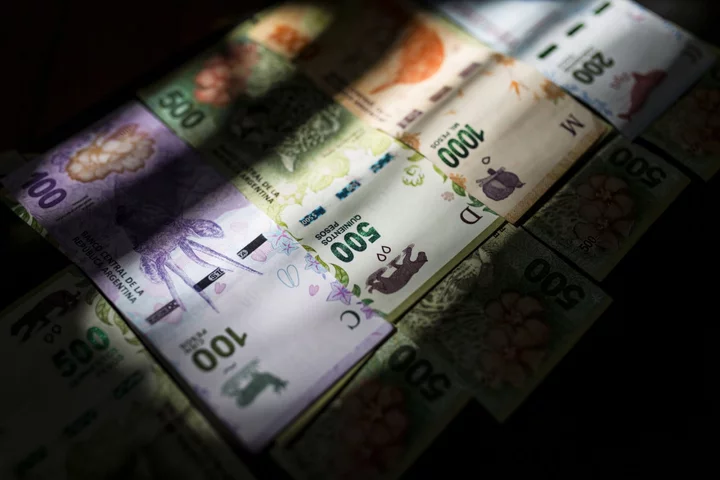Argentina devalued the official peso about 18%, an admission by the government that it ran out of options to defend an unsustainable exchange rate amid dwindling reserves after a heavy electoral defeat on Sunday.
The peso will trade at 350 per dollar, compared to the 287-peso level of Friday’s closing price, a central bank official said Monday. The central bank will also hike the key interest rate to 118% from the current 97%.
The drastic decision by the administration of President Alberto Fernandez comes after years of trying to avoid a devaluation of the currency that’s likely to fuel more inflation and add political volatility ahead of the Oct. 22 presidential election. Argentina’s international reserves stand at a 17-year low, with its liabilities surpassing assets on a net calculation, leaving policymakers with no more resources to defend the official peso levels. Inflation accelerated to over 115% in June.
The changes come after libertarian candidate Javier Milei won a key primary election on Sunday, with the ruling Peronist coalition coming out third behind the more business friendly opposition. The government’s candidate, Economy Minister Sergio Massa, will have now an even steeper path to qualify to a runoff with Monday’s devaluation given the unpopular impact on Argentine consumers.
Read More: Milei’s Plan for Argentina: Dollarization and Scrapping Taxes
The Argentina central bank confirmed the rate hike in a statement. It also rose the one-day passive repo rate to 111% this Monday, from 91%, and the 1-day active repo rate to 140%, from 116%. The Economy Ministry in Buenos Aires referred questions to the central bank.
The nation’s already-distressed foreign bonds plunged Monday with notes due in 2046 tumbling as much as 4 cents to 28 cents on the dollar Monday.
(Updates with context throughout and confirmation of rate increase in fifth paragraph.)

